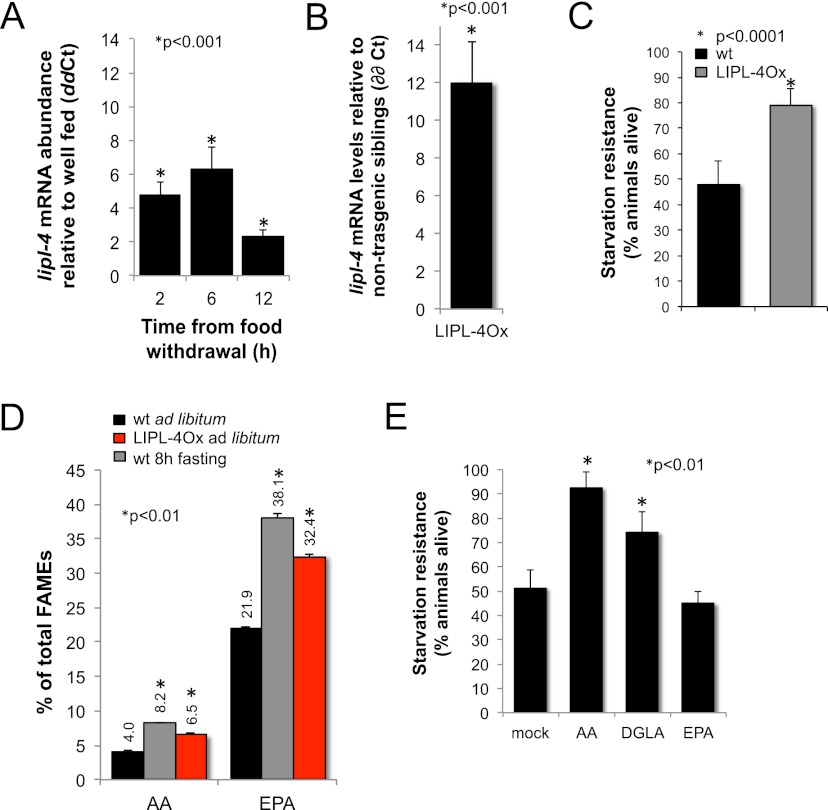Figure 1.
LIPL-4 overexpression mimics a physiological response that increases C. elegans resistance to starvation. (A) lipl-4 is transcriptionally up-regulated in fasting animals. lipl-4 mRNA abundance in fasting wild-type young adults relative to ad libitum feeding animals of the same age at different times from food withdrawal is depicted as mean ± SEM of two independent experiments. Statistical differences are depicted (*). (B) LIPL-4Ox animals express lipl-4 at twice the levels observed in fasted wild-type worms. lipl-4 mRNA levels in well-fed ges-1P∷LIPL-4∷SL2∷GFP young adults compared with control (nontransgenic siblings) is presented from three independent experiments, and all values are corrected for the efficiency of the primer pairs and normalized to ama-1 as internal control as well as to transcript levels in same age nontransgenic sibling animals. All quantitative RT–PCR (qRT–PCR) reactions were performed at least in triplicate. Median ± SEM of ΔΔCt is reported (Pfaffl 2001). (C) LIPL-4 overexpression promotes resistance to starvation. LIPL-4Ox and control (nontransgenic sibling [NTS]) hatchlings were sorted (COPAS Biosort) and independently grown on OP50 bacteria, then harvested as young L4 larvae and rotated at 20°C in 1 μM Sytox orange in S-basal. Every other day, aliquots were sorted to calculate the percentage of red (dead) worms. The average percentage of LIPL-4Ox animals alive on the same day that ∼50% of control worms were alive from three independent experiments ± SEM is depicted. See also representative L4 survival curve in Supplemental Figure S2. (D) Fasting and LIPL-4Ox lead to an enrichment of ω-3/6 PUFAs. Levels of AA and EPA relative to total FAMEs (Watts and Browse 2002; Van Gilst et al. 2005b) are depicted as the mean percentage ± SEM for wild-type well-fed and 8-h fasted and well-fed young adults (similar results were obtained when compared with nontransgenic siblings) (data not shown). (E) AA and DGLA, but not EPA, promote resistance to starvation. Ten micromolar AA, 20 μM EPA, 10 μM DGLA (concentrations of supplemented fatty acids that lead to levels of incorporation comparable with those observed in LIPL-4Ox animals) (see Supplemental Fig. S3), or an equal volume of 50% ethanol was added, and the percentage of animals alive was determined and presented as in C but using Sytox green to stain dead worms.

